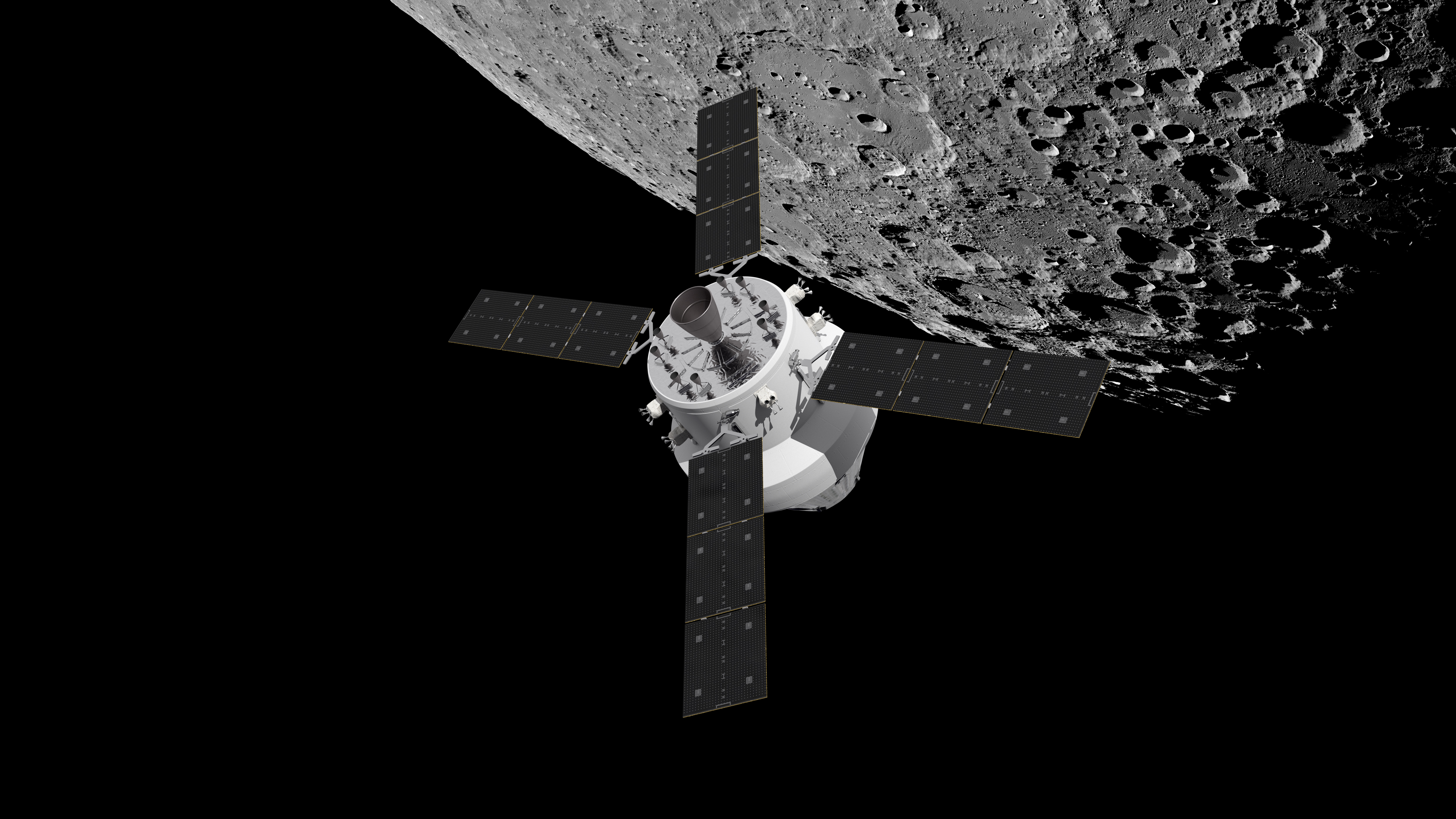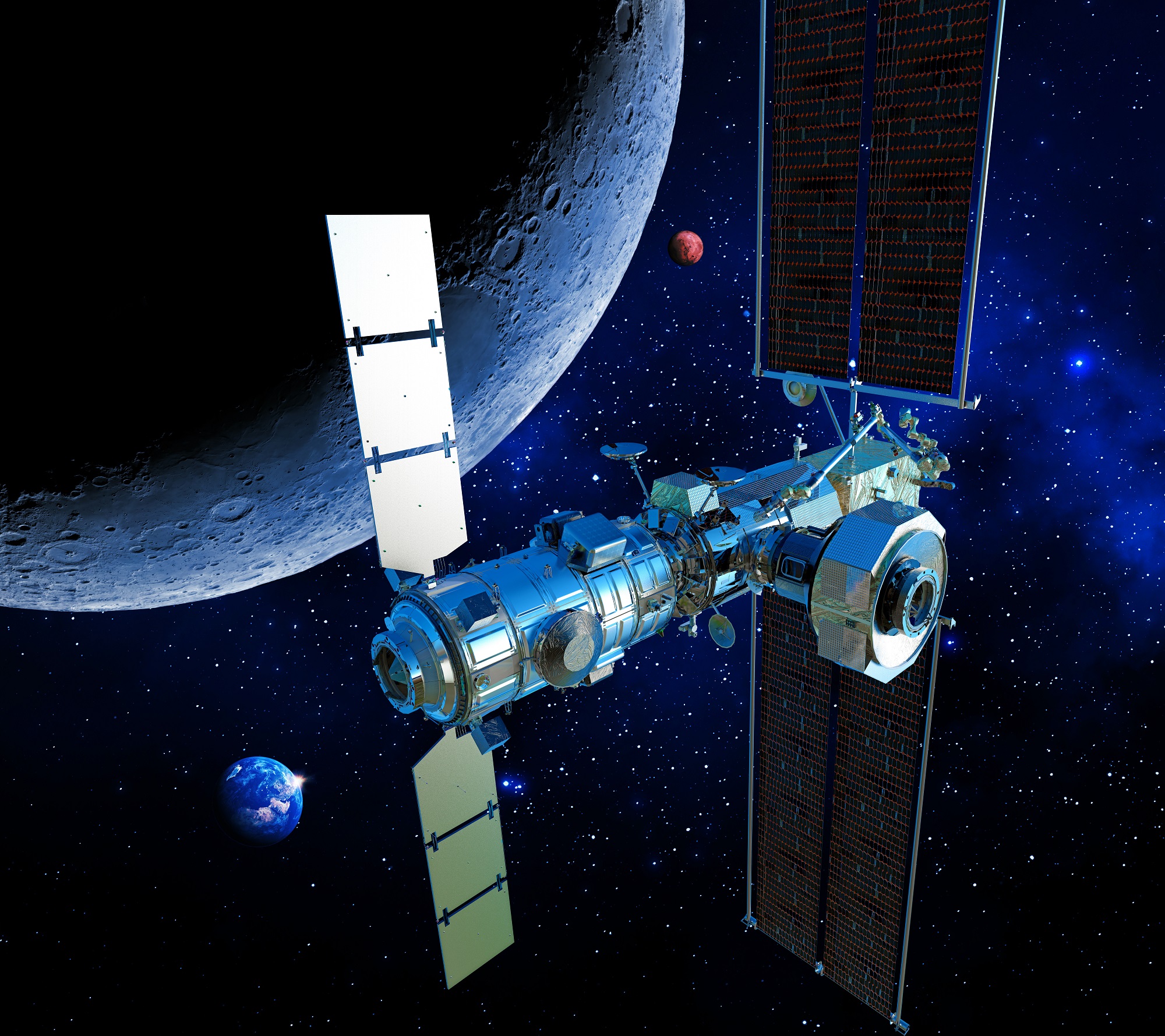NASA’s Artemis I successfully launched
The first mission of the Artemis program, named Artemis 1, has successfully been launched today aboard NASA's new mega rocket. Extremely visible in the media, the Net and social networks, this launch was extremely awaited and for good reason... 50 years after the last mission of the Apollo program, the Moon is back, more flamboyant and attractive than ever.
Why is the Moon suddenly back in sight, when the last crewed mission to the lunar surface was Apollo 17 in 1972? Well, since then a host of scientific discoveries have made this celestial body as rare as it is precious. First, as we suspected – but it was only confirmed in 2008 – there’s water on the Moon. We’ve also found oxygen and hydrogen atoms. And these could also be extracted from the lunar ice to make rocket fuel, for example. Other resources include Helium-3, an energy-producing isotope, which could power future rockets for the next step in the space race: sending people to Mars and deep space. The Moon could serve as a staging post for even more ambitious missions to the Red Planet. What used to be the stuff of science fiction is now becoming reality.
The unmanned mission launched today will serve to validate the proper functioning of the spacecraft. As astronauts, dummies have been placed on board the spacecraft, equipped with multiple sensors and instruments that will allow us to experience this unusual expedition in near real time, from the ground. This mission prefigures Artemis 2, scheduled for launch in 2024, with real astronauts on board. Artemis 2 will orbit the moon but will not land. It will be necessary to wait until 2025, with Artemis 3, so that the Humanity can again walk on the Moon.

Orion © ESA
NASA's ambitious Artemis program has three major objectives: to build a cislunar space station, Lunar Gateway, to establish a physical and sustainable presence on the Moon’s surface, and to anticipate manned exploration missions to Deep Space.
Thales Alenia Space: Sustaining Life on Humanity’s Return to the Moon
Human space exploration is rapidly evolving toward long journeys and enabling life in deep-space has become the cutting-edge technology challenge. NASA's Artemis program is its brand new chapter: lunar exploration that will send humans farther into space than ever before.

We are going back to Moon to stay in a sustainable way, a challenge tackled by Thales Alenia Space, a joint venture between Thales (67%) and Leonardo (33%), that is designing the entire lunar ecosystem, working on vehicles, orbital human infrastructures and surface solutions to enable to reach the Moon, living and exploiting resources to foster the new lunar economy.
Through its unique expertise in space infrastructures and its “Space for life” aspiration, Thales Alenia Space gives rise to all these elements, whose synergy becomes a crucial part of the “Forward to the Moon” strategy.
European Service Module - the backbone of Orion that enables human life inside the capsule

Many key technologies for Orion, the spacecraft that will bring the astronauts to the Moon’s orbit within the Artemis mission, are provided by Thales Alenia Space through the European Service Module (ESM), developed under a European Space Agency (ESA) contract. Thales Alenia Space provides the subsystems that are an essential part of the module, ensuring vital and safe conditions for the crew during the entire mission.
Thales Alenia Space provides critical subsystems for all 6 modules to Airbus Defence and Space, Orion's ESM prime contractor, including the structure, thermal control and main life support capabilities. The state-of-the-art technology used for the primary structure enables the ESM to be light enough to fly farther and longer, while being strong enough to perform its mission.
A few months ago, Thales Alenia Space delivered the backbone of Orion’s ESM4. The module is now in Airbus Defence and Space’s clean rooms in Bremen, Germany, where it will complete the integration and undergo final tests, supported by Thales Alenia Space engineers on-site. In addition to ESM4, as for previous modules 1, 2 and 3, the forthcoming ESM5 is currently being developed in Thales Alenia Space facilities in Turin.
Leonardo is also partnering the program, supplying the photovoltaic panels (PVA) and Power Control and Distribution Units (PCDU) for ESM modules 1 to 6.
Humanity’s first deep space living quarters: safety, comfort and breathtaking view

Thales Alenia Space key role in Artemis mission continues: the Company, partnering with Northop Grumman, is contributing to HALO, NASA’s habitation and logistic module that enables the “initial” life environment on Lunar Gateway, and acts as a prime contractor for the International Habitation Module (I-HAB), the European home in Lunar Orbit and the breathtaking new windowed module ESPRIT, (European System Providing Refueling, Infrastructure and Telecommunications) ensuring enhanced communications, refueling capability and additional pressurized environment making history for the new industrial solutions to get to the Moon and beyond.
Thanks to its unprecedented expertise, drawing on the experience gained with five Automated Transfer Vehicles (ATV) and development of a large part of the elements for the International Space Station (ATV Integrated Cargo Carriers, Nodes 2 & 3, Cupola, Columbus, MPLM, PMM, Cygnus PCM, Bishop Airlock), Thales Alenia Space is not only leading the race for pressurized modules, but contributing to the development of the “new Apollo” – and to human exploration of space beyond low-Earth orbit.